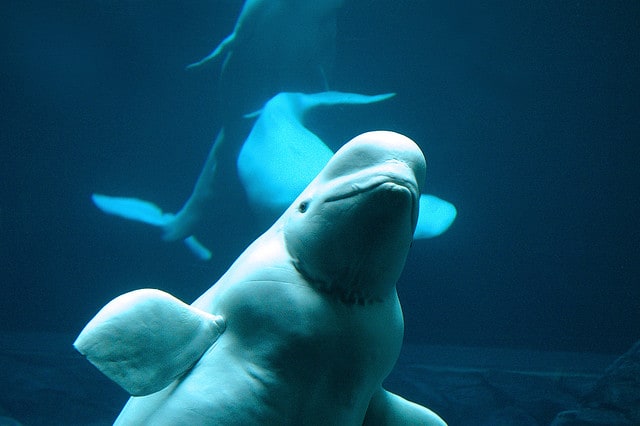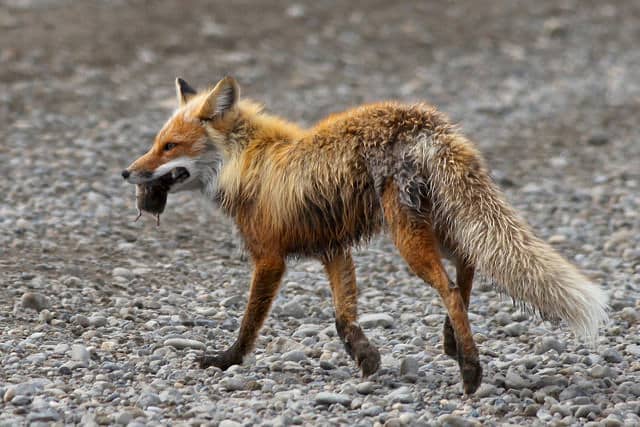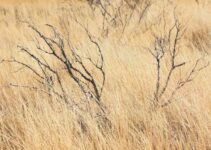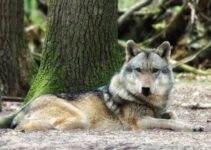There are many Biomes scattered about our world. The Tundra, discovered about 10,000 years back, is the youngest of them. Around 20% of the Earth’s surface falls on this particular Tundra. The Tundra Biome is located on the Northern Hemisphere of the Earth, including Alaska, Northern Canada and Russia. This is a very cold tundra, with both arctic air masses and polar air combining to form sometimes harsh temperatures that fall well below freezing temperatures.
The Tundra is an ecosystem located at the North Pole. This biome surrounds the Arctic Circle and is the coldest biome of all on earth. While it is centered on the North Pole, there are other areas of the world are considered to be part of the tundra because they share the same climate. These areas include the region of Antarctica, parts of Alaska and parts of Northern Canada.
There is a short summer, although some won’t classify it as a summer because it is so short. Tundra temperatures average -58 degrees F. The wasteland areas of the Tundra are not only cold, but they are also very rocky, and there is very little vegetation in the area. Trees won’t be found at all when you enter the areas of the tundra. Along with the cold temperatures, dry weather is also noted. Snowfall is common in the area, and because temperatures never warm to temperatures hot enough, snow is always found. Because of the extremely cold temperatures in the Tundra, not all animals are able to survive in the area
While the Tundra only warms up for two months of every year. Despite the frigid temperatures, the tundra biome is thriving with life of all kinds. There are plants, mammals, insects, flowers and much more thriving in the tundra. The plants that grow on the tundra cluster together as a way to protect themselves from being uprooted by the harsh winds that blow there. Animals may hibernate most of the year or they may migrate to warmer climates for part of the year.
We need to save the Arctic not because of the polar bears, and not because it is the most beautiful place in the world, but because our very survival depends upon it.
– Lewis Gordon Pugh
Various Tundra Animals
Here is a list and brief description of the common animals you will find in the tundra.
1. Tundra Swan: The Tundra Swan is a beautiful white swan with a black beak. The bird generally nestles by bays after traveling more than 1,000 miles to migrate to these cold regions. The bird is large, at about 4 to 5 feet long, and weighs approximately 22- 25 pounds. The Swan has a wing span of 5 ½ feet. It is a great swimmer as well.
2. Artic Hare: The Artic Hare is a small animal, averaging only 23 inches in length. Because of its small size, the Hare often rests with other Hares to stay warm. The Artic Hare can greatly vary in weigh with some as small as 6 pounds and others as large as 15 pounds. The Artic hare’s fur will change with the season. In the winter, hair is white to blend in with the snow. During the summer, the Hare’s hair turns gray.
3. Arctic Fox: The Arctic Fox is another beautiful animal. It survives in temperatures as cold as -58 degrees F. Its short white coat allows it to perfectly blend in during the snowy winter months. The small mammal weighs between 6.5 and 13 pounds. Known for its pure white fur, the Arctic fox is much smaller than its forest cousins, it also isn’t always all white but the color of its fur will darken with the change of the seasons.
Its beautiful colorings help it hunt, and the diet of this animal consists of a variety of insects and birds and fish. During the winter months food can become scarce for the Arctic Fox, as it is not uncommon for the animal to eat the leftovers left behind by polar bears and other animals. The Arctic Fox usually survived for 3 to 6 years in its natural habitat.
4. Harlequin Duck: The Harlequin Duck received its name from the Harlequin costume dancers, thanks to its colorful appearance. This duck has three brown patches on its face. This duck is very strong, with webbed feet that enable them to quickly move through the often rampant waters found in the Tundra. The small duck weighs only 1 to 1.5 pounds, with the same measurements in length. The wing span of the Harlequin Duck Is 2 – 3 feet. Shellfish, mussels, and small fish compose the diet of the duck.
5. Killer Whale: The Killer Whale is an animal that is well suited to thrive in the cold climate of the tundra. It has layers of insulating blubber and its diet makes it easy for it to survive beneath the ice.
6. Snowy Owl: The Snowy Owl is a very beautiful bird. It averages 23 to 28 inches in height, with a weight between 3 and 8 pounds. A massive wing span of 4 to 5 foot helps the Snowy Owl fly with ease through the windy skies found in the Tundra. Snowy Oils get whiter as they age, but the female is always slightly darker than the male. Lemmings are the delicacy of choice for this bird. Thanks to its pristine hearing and eyesight, the Snowy Owl is a fantastic hunter. This bird is very quiet, with mating season generally the only time that you’ll ever hear a peep out of the creature. The Alaskan Tundra is the preferred home for this owl species. The Snowy Owl generally finds an isolated area to live.
7. Musk Ox: Living in herds with 3 to 5 other Musk Ox, this large animal typically ranges in height between four to five foot tall, and weighs 500 – 800 pounds. The Musk Ox is very daunting in appearance, with two layers of thick fur that help protect and keep the Musk Ox warm. The bottom layer of fur is shed during the summer months to help cool the Ox down. The Musk Ox s typically found in Canada, Sweden, Alaska, Greenland, and Siberia, and it is the only animals with hooves to live this far out in the Tundra.
Musk Ox is a long haired, horned mammal that live in frozen environment of Alaska, Greenland, Canada, Sweden, Norway and Siberia. The musk ox weigh from 500 to 800 pounds. Musk Ox travel in herds that protect the young from predators, like wolves.
8. Sea Lion: Like the killer whale, the sea lion is well equipped for the harsh climate. It is primarily a fishes and can use its strong body to swim after prey as well.
9. Polar Bear: The huge polar bear is a Tundra animal. Polar Bears build dens for their families. They average between 6 and 7 foot in height, and they can weigh anywhere from 600 pounds to 1,200 pounds. Polar Bears have very thick fur, which helps protect them from the elements in the Tundra and keep them warm. Seals are the main course for a Polar Bear, however, if the animal is unable to find a seal and desperate for food, carcasses of dead animals may be consumed.
They are layered in fat that they acquire during the spring and summer months of eating meat that allows them to hibernate easily. They do not sleep the whole winter through but wake periodically to hunt during the winter months.
10. Ground Squirrel: Usually overlooked on the list of tundra animals, this little squirrel is thicker bodied than most and has a deep fur coating that is made with special hollow hair core growths that helps it to resist the wind.
11. Grizzly Bear: The Grizzly Bear is another animal that lives in the Tundra. Most of us have heard a lot about the Grizzly Bear, yet know little actual facts about the animal. The Grizzly Bear usually calls the Canadian and Alaskan Tundra home. The Grizzly bear makes its home in forests, valleys, and mountains. The Grizzly Bear is known for its massive strength and intense aggression. These two factors leave the Grizzly bear a feared species in its habitat, and to humans. This bear can reach lengths of 8 foot, with the ability to stand up to a height of about 3 foot. This bear can weigh as much as 700 pounds.
12. Lemming: The food of choice for the Snowy Owl, Lemmings reach about 6 inches in length, with a tail that adds another ¾ of an inch to that length. Lemmings rapidly produce, but are also quick to become endangered. Most lemmings are killed by Arctic Fox or Snowy Owls. The Lemmings does not hibernate during the winter. Thanks to its thick coat of fur, the small animal is able to withstand the temperatures without worry.
While many people associate lemmings with running off a cliff, but these weasel like creatures don’t behave like that and can both swim and stay on the tundra thanks to the thick coat of fat and sleek fur that covers them. Lemmings do not live with one another or spend very much time with other Lemmings. Instead, they are together only for mating, and then separate once again.
13. Seal: Like the whale and the sea lion the seal thrives in the tundra. During the summer months it will swim to the shores to breed and give birth and then lives off the ice floes and fish.

14. Beluga Whale: The pale white Beluga whale is another of the monsters of the deep that thrives in the cold waters of the tundra. They can be found in the waters off both poles.
15. Moose & Caribou: Both the moose and caribou live in the tundras of Alaska and Canada, they are migratory animals and will travel to warmer areas during the worst of the winter months; however they can also survive the winters on the tundra as well.
A Caribou is very much deer-like in appearance. The animals are between four and five foot tall, and can weigh anywhere between 200 – 800 pounds. Their large, thick hooves are in place to protect the Caribou from the heavy and harsh snow. This animal, despite its large size, usually feeds only on plants and grass. In the winter, the Caribou eats mushroom and lichen. This animal is commonly found in Greenland, North America, Asia, and Europe. Even the female Caribou have antlers. The Caribou is the only deer in which both the male and the female have antlers.
16. Snowshoe Rabbit: These all white rabbits have distinctive black feet and are about the size of a jack rabbit. They can bound over snow and ice easily and do not not hibernate.
17. Gray Wolf: Considered to be the forebear of the sled dogs that are used to travel over the ice and snow, these wolves are much larger than their Southern cousins. They do not travel in large packs, but stay in close family units.
18. Ermine: The Ermine is found in northern parts of the U.S., Canada, and Eurasia. This very small animal enjoys making its home near marshlands. Weighing only 3 – 16 ounces, and reaching 7 to 13-inches in length, the Ermine has well adapted to its cold living environment. It generally comes out only during the summer months, but is sometimes seen during the winter.
The male Ermines typically a bit longer than the female. The Ermine mate each year, with an average of 13 babies born. Rodents, rabbits and small insects are all preferred meals for the Ermine. Ermine or Short-tailed Weasels live in the Arctic tundra of North America and Europe. They eat small animals , birds and insects.
19. Grasshopper: Grasshoppers are insects that can hop, walk and fly. Most of the grasshoppers are green in color. They eat plants and are eaten by birds, rodents, reptiles and spiders.
20. Mosquito: There are more than 2700 species of mosquitoes that are found around the world. Mosquitoes are often carrier of diseases like malaria, encephalitis, yellow fever, dengue fever, dog heartworm, West Nile virus.
These beautiful animals all like it a little colder than most of us, making them perfect for living in the cold and rigid temperatures of the Tundra! Despite its harsh and inhospitable climate, the tundra plays host to many different animals throughout the year. While some may migrate out during the winter months, they return in the summer as the biome of the tundra holds unique resources that are necessary for the survival of their species.






